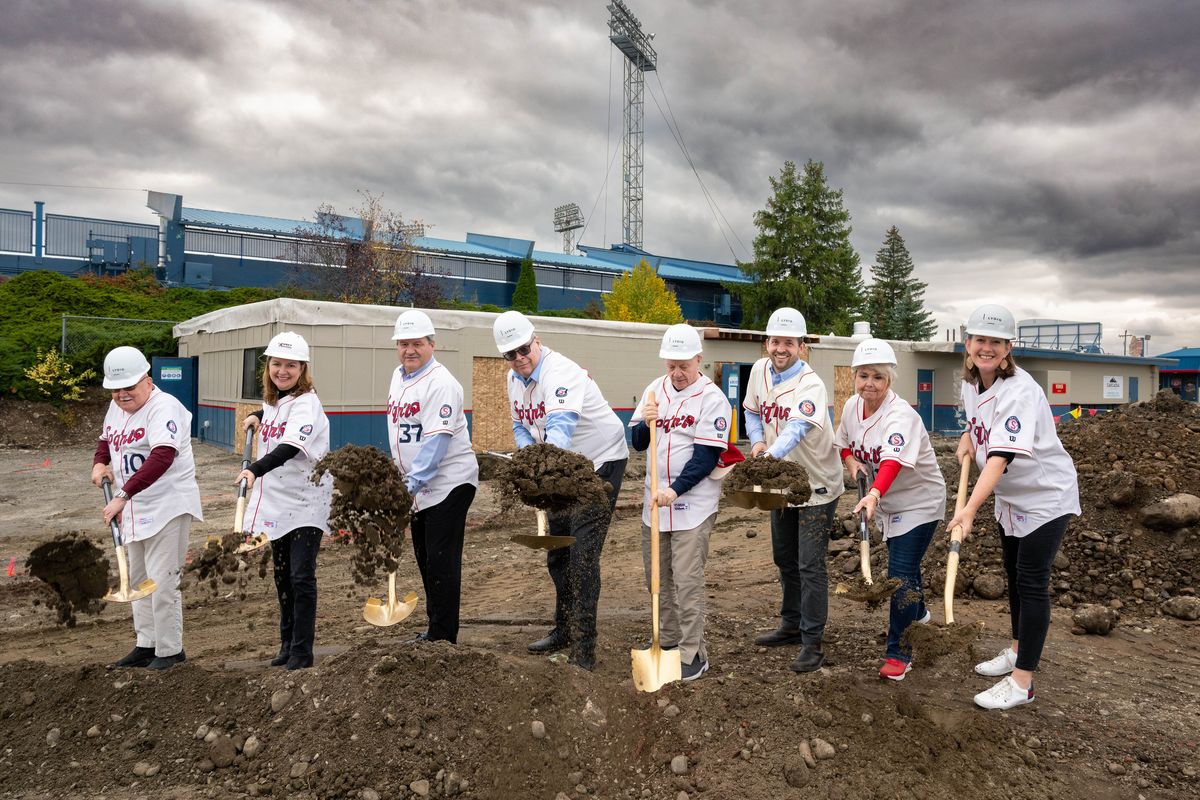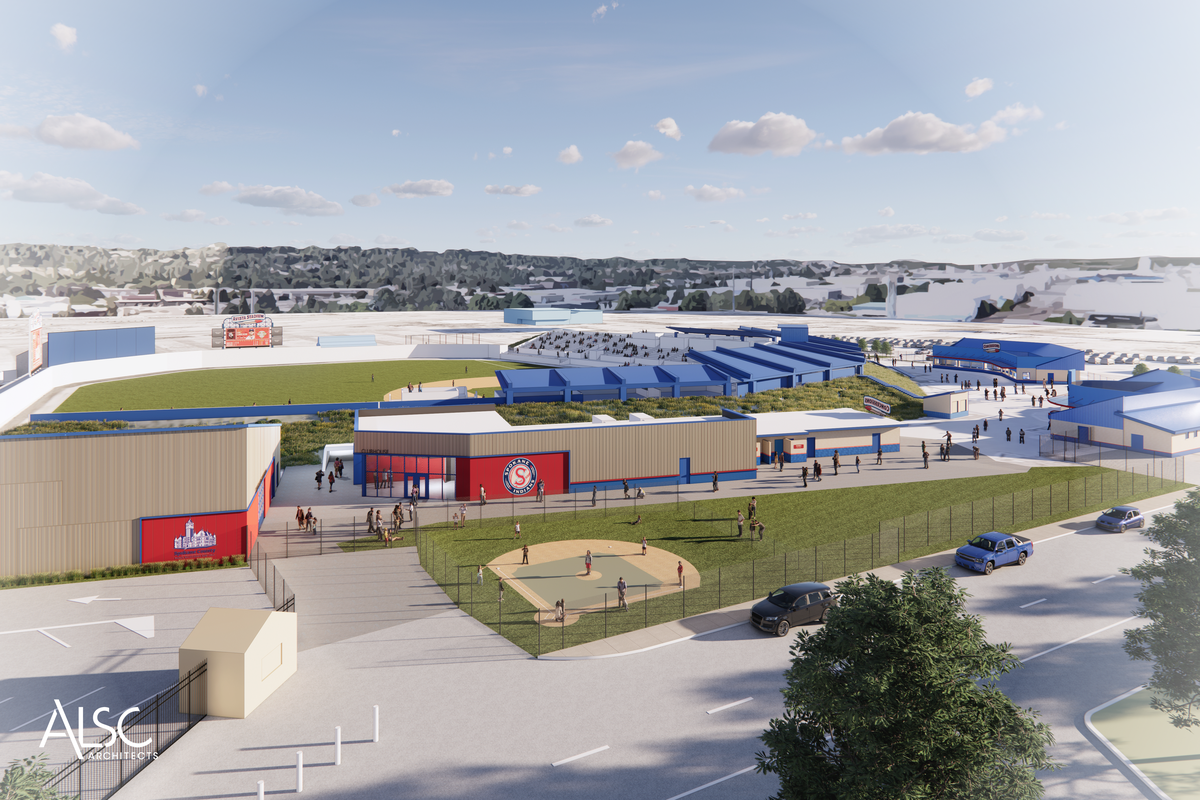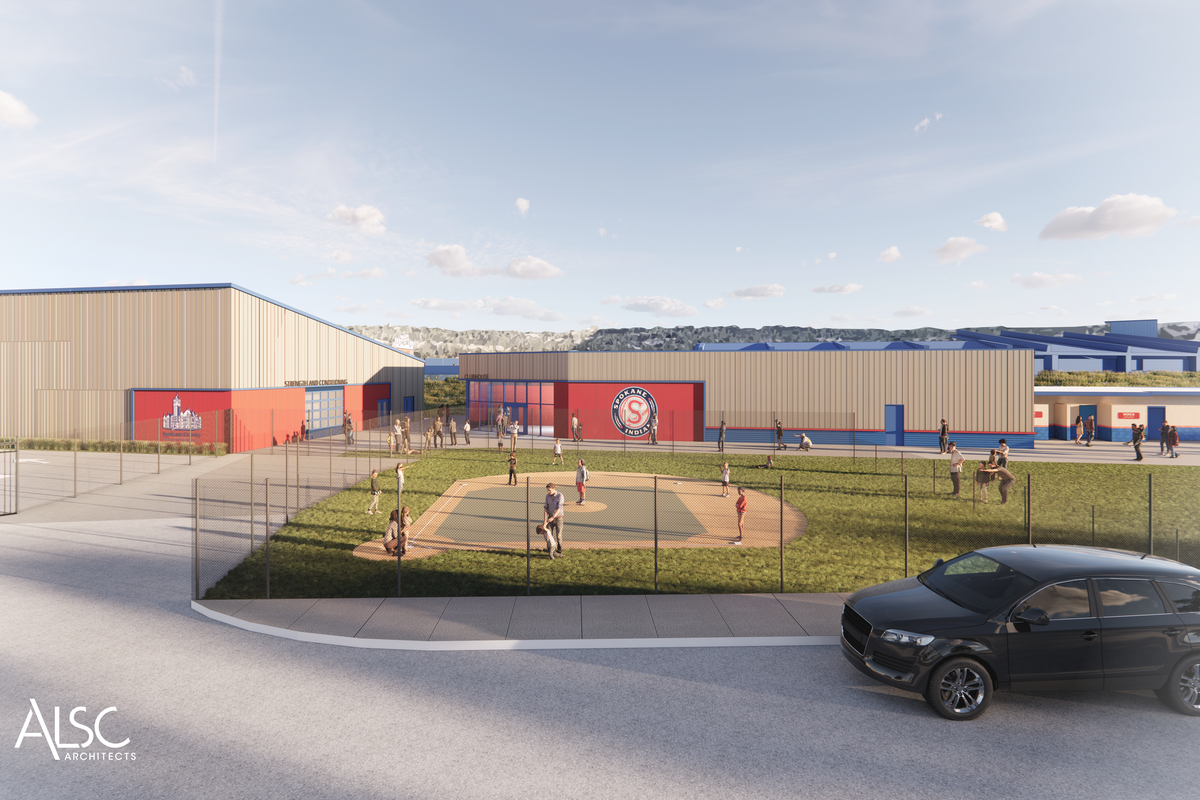‘Baseball transcends politics’: How local and state governments came together to renovate Avista Stadium with private help
Workers at Avista Stadium recently started preparing for a series of major renovations that will not only modernize the 65-year-old county-owned facility, but ensure that baseball affiliated with the major leagues will stay in Spokane for future generations.
In 2020, Major League Baseball took over operation of the minor leagues and reduced the number of teams from 160 to 120. Part of the restructuring mandated minimum ballpark standards to ensure player health and safety, and Avista Stadium – as with most minor league stadiums – was not compliant with many of those requirements.
The areas where the public ventures – seating bowl, concessions, team store, ticketing – are in good shape. The areas of the park that fans don’t access – clubhouses, dugouts, workout facilities, dining areas – need significant improvements to meet MLB code.
Negotiations between the Spokane Indians ballclub and government agencies that agreed to help fund the project – Spokane County, Spokane Valley and the state of Washington – were protracted and at times delicate as they worked to piece together the $16.5 million needed to kick off the project. But the parties eventually found common ground to ensure the project would have adequate funding to satisfy Major League Baseball’s requirements and provide new fan amenities while avoiding a bond issue or the unrealistic expectation of building a new stadium – a situation many other teams and municipalities across the country face.
“Baseball isn’t about politics,” Spokane County Commissioner Mary Kuney said. “To me, that’s the beauty of baseball – it transcends that. It doesn’t matter your political affiliation for your love of baseball.”
A team effort
After two-plus years of negotiations and fund-sourcing, construction has started at the stadium to ensure meeting MLB’s deadline for the improvements of opening day 2025. Teams in default of the requirements risk losing their MLB affiliation – which means minor league baseball would depart those markets.
“I think it’s really important that the Spokane Indians stay in the Spokane Valley where they’re headquartered,” said state Sen. Mike Padden, R-Spokane Valley. “I was disappointed in the way Major League Baseball handled it, but there wasn’t much choice but to respond.”
The club also has a “wish list” of fan amenity upgrades that fall outside of MLB’s requirements, but most of them are part of a still-unfunded future phase of the project.
“I appreciate all of our partners that joined us in securing the future of professional baseball in Spokane,” team owner Bobby Brett said. “The Bretts have been committed to this community for nearly 40 years and look forward to making Avista Stadium the home of the Spokane Indians for many years to come.”
“It’s an example of what we can do when we all work together,” City of Spokane Valley Councilman Rod Higgins said. “And believe me, there are a lot of people who feel as I do that this is looking to our future.”
Ultimately, no one involved in the Avista Stadium project wanted to be known as the ones responsible for losing professional baseball in Spokane.
“That is definitely how I felt,” Kuney said. “I heard a lot of citizen input – they didn’t want to lose the stadium.”
The project
So, what can baseball fans expect from the MLB-required renovations at Avista Stadium?
“Phase 1” is under way. By opening day 2024, the home clubhouse will be moved to the third base side, and both clubhouses will be expanded to exceed MLB minimums – including separate dressing areas for female staff and indoor dining facilities – and the stadium lights will be upgraded to computer-operated modern LED lights.
The county selected ALSC Architects as the design team and Lydig as the general contractor. Turner & Townsend Heery is serving as the project manager and county/owner’s representative.
“The work at Avista Stadium for the Spokane Indians is more than just construction; it’s about building excitement and building a community,” Lydig vice president Vince Campanella said. “Together with ALSC Architects we are fortunate to be a part of the team that is trusted with crafting a new experience for players and creating new amenities where fans can come together, share unforgettable moments, and strengthen the bonds that make our community so special.”
“The Spokane Indians mean so much to our community and we are thrilled to see their legacy continue well into the future,” said Rustin Hall, principal of ALSC Architects. “For all of us, this is more than just another project – it’s an opportunity to see a rich tradition of entertainment continue for all generations to enjoy.”
During the 2024 season, the grounds crew area will be relocated from the left field corner to beyond the outfield wall in center field. A state-of-the-art digital videoboard will be mounted above the left-center field wall, and the matrix board in right center will be replaced with a modern digital scoreboard.
“While all the improvements to the ballpark are historic and impressive, the addition of the two new video boards will be the most impactful fan-facing pieces we’ve ever done,” Indians senior vice president Otto Klein said. “We’re known for having the most creative promotions and entertainment in the country, and this will take it to the next level.”
The largest construction aspect of the project will take place beyond the third base clubhouse. That’s where the indoor batting cages, workout facilities and umpires clubhouse – again, including women’s facilities – will be housed.
“Phase 2” commences after the completion of the 2024 season. The stadium modernization work includes a complete reconstruction of the playing field, and padded outfield walls will be added. The design work will provide an MLB-quality field for the Indians, led by Tom Sherry, president of SPVV Landscape Architects.
“The work really will transform this facility for both the players and the spectators,” Sherry said. “Being a Spokane native and Indians fan since the 1960s, it’s been an absolute honor to work with the Indians on this design team. This is a once-in-a-lifetime time opportunity, and we don’t take that lightly.”
Over the 2024-25 winter, the dugouts will be deepened and lengthened, and the bullpen areas will be separated from the field of play by a short wall. The protective netting, which currently extends over both dugouts, will be extended to the foul poles.
Outside the stadium, the current County Parks and Recreation building in front of the home plate gate will be renovated to house the team’s business operations.
“This project not only secures the Spokane Indians future in this location, but will be a catalyst for additional use and improvements to Spokane County’s Fair and Expo Center Campus,” said Doug Chase, director of Spokane County Parks, Recreation & Golf.
Finally, the stadium will be outfitted with television cameras and operations to stream games on MiLB.TV in time for 2025 opening day.
It sounds like a lot – and it is – just to become compliant with MLB’s requirements. But it’s a better, and less costly, situation than some municipalities – such as Everett, Eugene and Hillsboro – which cannot renovate the stadiums they currently play in and are forced to find funding to build a new stadium with costs running from $60-$90 million depending on the market.
“We’re in a lot better position than some other places who have a lot more money to spend and a lot more work to do,” County commissioner Chris Jordan said.
“The mayor of the city of Everett is one of the people I’ve talked to,” Kuney said. “I think at one point she was just, ‘I don’t know how we’re coming up with $70 million dollars for a new stadium.’ They’re trying to figure it out. We’re very fortunate we didn’t have to do that.”
The team is still in the process of securing funding for “Phase 3” of the project. They hope to expand the “Champions Club” and other fan amenities.
“I am confident we have the right team in place to meet and exceed MLB’s requirements while greatly enhancing the overall fan experience,” Indians president Chris Duff said. “In the end, this will be a project that all of our partners will be proud of, and it will put Avista Stadium and the Spokane Indians in a position to serve our community for many years to come.”
The players
Four entities were part of the funding negotiations.
Spokane County – owners of Avista Stadium – has five county commissioners. The city of Spokane Valley – where the stadium is located – has seven council members. The state of Washington passed a capital budget that included funding for 11 ballparks across the state, including Avista Stadium. The Spokane Indians and Avista make up the private component of the financing of the project.
“The city of Spokane Valley appreciates the state going to bat to help support minor league baseball communities,” Mayor Pam Haley said. “Keeping the Indians in Spokane Valley is important to our citizens and the city is excited to partner with Spokane County, Department of Commerce and the Indians to complete this project.”
With as many divergent jurisdictions, philosophies, opinions and motivations involved, it’s no wonder there was much debate.
“There were some people that were opposed to putting (public) dollars into the stadium, feeling like it was going to a business. But the county owns the stadium – it’s our asset,” Kuney said. “If baseball were to go away, we’d have to pay to maintain that asset anyway.”
County Commissioner Amber Waldref expressed thanks to the other governmental agencies for their cooperation.
“The state, I have to say, really was an ally in looking for funding for this stadium and other stadiums across the state, along with the city of the Valley. It’s been great to work with them. They see this as a huge economic engine.”
The sport is a rare unifier, said state Rep. Leonard Christian, R-Spokane Valley.
“Baseball must be something that crosses all the divides of all the government agencies,” Christian said. “This doesn’t normally happen. Both sides of the aisle came together to make sure that the baseball remained here in our state, especially in Spokane.”
County Commissioner Chris Jordan’s grandfather, Jack Spring, played for the Indians in 1952-53 before an eight-year MLB career, so baseball is near and dear to him.
“I’m excited that although we were worried whether we’d be able to keep our team – given the consolidation going on with MLB, given our ballpark is 65 years old – that we were able to come together with the county, with the team, with the Valley and with the state, and say, ‘We’re gonna save minor league baseball in Spokane and do it in a way that doesn’t raise taxes on anybody.’ ”
The finances
It will take $16.5 million to complete the renovations and upgrades to Avista Stadium to satisfy MLB’s requirements. The county will initially contribute $5.5 million toward the project. The city of Spokane Valley has pledged $2.5 million, the state will provide $5.8 million and the private contributions total $3 million.
The county has pledged to contribute up to a total of $8 million, but the additional $2.5 million would have to be matched by other public or private contributors in order to be activated.
“It’s important that we understand that it’s both public dollars and private dollars working together to keep this going for our community,” county Commissioner Amber Waldref said. “I want to commend the Spokane Indians club and their ownership for stepping up and contributing a lot to this.”
“Luckily everybody really worked together to raise the money,” state representative Suzanne Schmidt said. “The private monies, the state money, the county money, city money – we all worked together, because we knew how important this was to our community.”
Part of the county’s funding agreement raises the Indians’ rent, transfers stadium maintenance fees from the county to the team and introduces a revenue-sharing component to help mitigate the county’s burden.
“You put those pieces together, and it’s pretty evident that the county’s investment will pay for itself based on better terms,” Jordan said. “When combined with no increased taxes – and saving our team – I think that works for all of us.”
Kuney took a practical outlook to the financing to upgrade the county-owned facility, considering the investments made by the city, state and the team.
“To put $8 million in and get up to $25 million back, that’s a pretty good investment in my mind,” she said.
As the county evaluated the Avista stadium project, they elected – for the first time – to utilize Washington state’s GCCM (General Contractor/Construction Management) alternative delivery method which has enabled the contractor to come onto the team during the design and participate in developing a game plan for how to construct all the components of this complex project within the MLB timelines while minimizing the impact to baseball operations.
“We are honored to be partnering with Spokane County and the Indians ballclub for this important community project,” David Beaudine, vice president of Turner & Townsend Heery, said.
From the procurement of the pre-engineered metal building for the training and maintenance buildings to the pre-qualifications of the sod and field restoration contractor, executing this work through the traditional design-bid-build delivery would not only have cost the county more money but they would have not been able to be completed within the currently expected timeframes.




